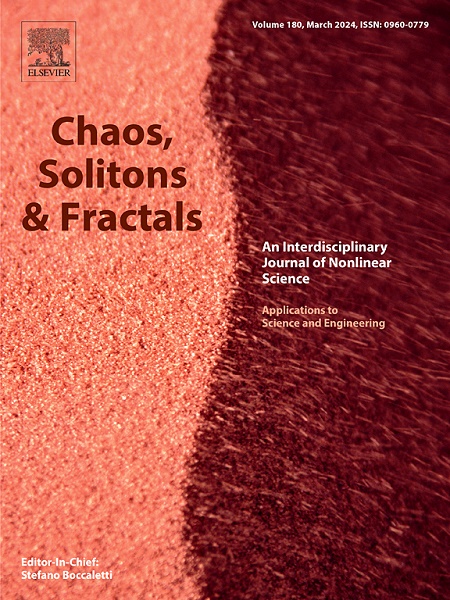The self-rotating beams base on diametric drive acceleration related to band curvature in a nonlocal two-dimensional square photonic lattice
IF 5.3
1区 数学
Q1 MATHEMATICS, INTERDISCIPLINARY APPLICATIONS
引用次数: 0
Abstract
Optical diametric drive acceleration, also known as self-acceleration, has been predicted theoretically and verified experimentally in one-dimensional(1D) photonic lattices, which appears as two beams bending in the same direction. This phenomenon results from the interaction between two beams with positive and negative effective masses which are defined by energy band curvature. In contrast to 1D case, the band curvature is a second-order tensor in a two-dimensional(2D) photonic lattice, which may be isotropic or anisotropic. The energy bands exhibit a close relationship with the lattice structure, and the simplest square photonic lattice with three high symmetry points has been selected for this paper. We investigate the propagation of the anisotropic X-beam and the isotropic M-beam under the self-defocusing Kerr nonlinearity. The result shows that X-beam and M-beam bend in the same direction when they are staggered only in the x-direction. This is consistent with self-acceleration in 1D photonic lattices. And when their incident position is staggered in both the x-direction and y-direction, they undergo a rotation during propagation, which we call self-rotation. This self-rotation possesses a novel mechanism in that the beams under study do not require a helical structure similar to vortex beams, do not need to take into account the spin–orbit interactions and pseudospin-mediated, and just propagate in a 2D non-chiral photonic material.
求助全文
约1分钟内获得全文
求助全文
来源期刊

Chaos Solitons & Fractals
物理-数学跨学科应用
CiteScore
13.20
自引率
10.30%
发文量
1087
审稿时长
9 months
期刊介绍:
Chaos, Solitons & Fractals strives to establish itself as a premier journal in the interdisciplinary realm of Nonlinear Science, Non-equilibrium, and Complex Phenomena. It welcomes submissions covering a broad spectrum of topics within this field, including dynamics, non-equilibrium processes in physics, chemistry, and geophysics, complex matter and networks, mathematical models, computational biology, applications to quantum and mesoscopic phenomena, fluctuations and random processes, self-organization, and social phenomena.
 求助内容:
求助内容: 应助结果提醒方式:
应助结果提醒方式:


